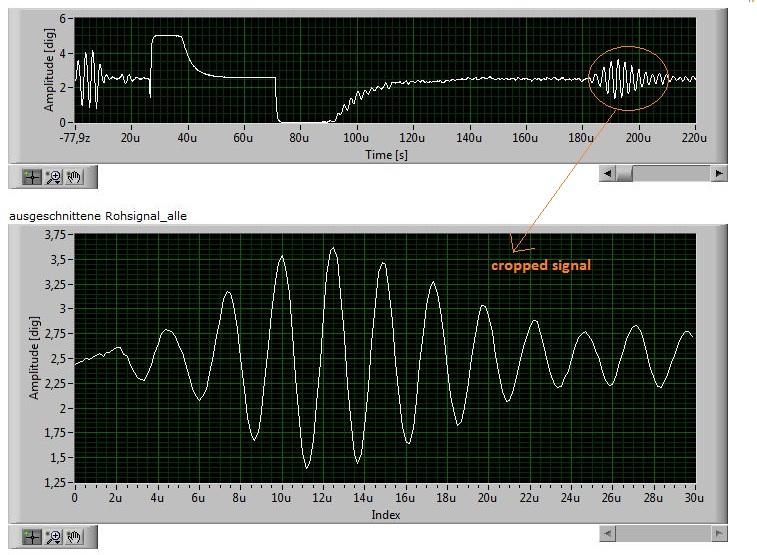Search the Community
Showing results for tags 'signal processing'.
-
Hello I excite a system with a sine wave at a fixed frequency and I have the signals of excitation and response. What is the best way to calculate the magnitude and phase of the system at this frequency? (Similarly to a frequency response estimation, but with only one chosen frequency).
-
Hi everyone, I have learnt a lot about LabVIEW programming from this website and this forum. However, this is my first post on the forum. So I have managed to get a signal, which is in time domain, with the amplitude in volts. It looks like the in the picture attached. The above signal is the raw signal, and the one below is a cropped section of the part of the above signal I am interested in. The increase in amplitude seen in the cropped section is an "echo" of the transmitted signal. The cropped signal starts again from time=0, but that can be taken care by simply adding the time, at which this signal was cropped. The task is to find at what "time" does the echo occur. Since the "echo" is spread over a considerably large distance over the x axis (time axis). I need to process the signal with some algorithm so that the echo can be measured at one reference point everytime, which represent the position of the echo on x axis. I am trying to use a peak detector VI and I am getting the value of indexes, where the peak is occurring. However, only peak detection is certainly not reliable. Any inputs on what methods or combination of methods could be used for this task?? Any help would be greatly appreciated!! Regards Ishan

